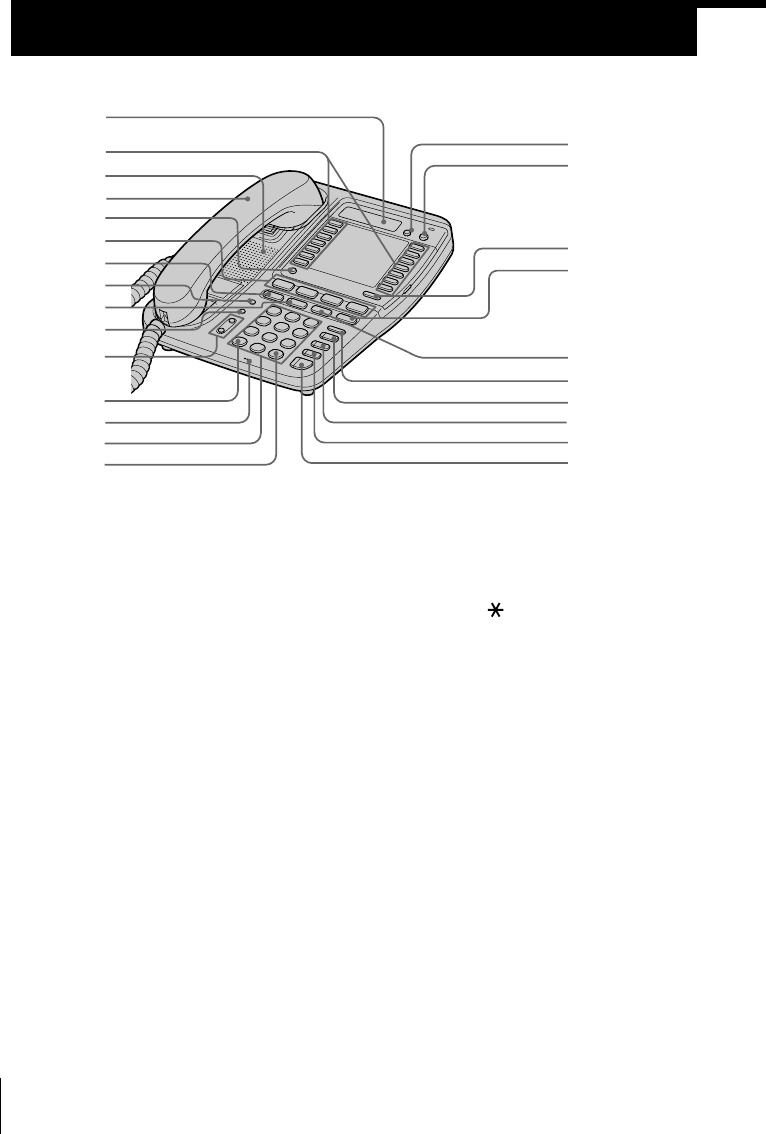
Getting Started
20
US
Identifying the parts
Refer to the pages indicated in parentheses for details.
1 Display window
2 One-touch dial buttons (p. 31)
Used to store numbers on the one-
touch dial.
3 Speaker
4 Handset (p. 9, 23, 28)
5 PROGRAM button
(p. 14, 31)
Used to access the menu.
6 LINE buttons (1, 2, 3, 4)
(p. 23, 28)
Lets you make or receive a call.
7 INTERCOM button (p. 37, 42)
Used to make an intercom call.
8 ALL PAGE button (p. 40)
Used to page all phones through
the speakerphone.
9 CONF (conference) button
(p. 34, 41)
Lets you talk with two parties at the
same time.
q; PAGE button (p. 39)
Used to page the other phone.
qa VOLUME +/- button (p. 24, 29)
qs TONE b button (p. 24)
Allows you to switch temporarily to
tone dialing.
qd MIC (microphone)
qf Dialing keys (p. 23)
qg # B button (p. 14)
qh ERASE/CLEAR button (p. 33, 36)
Used to erase a stored one-touch
dialing memory, end the operation
during the procedure.
qj FLASH button (p. 29)
Switches to a second call if you
have “call waiting” service, or lets
you make a new call.
qk LOWER button (p. 31)
Used to store numbers in the
second memory of a one-touch dial
button.
qh
qj
1
2
qk
ql
w;
wa
ws
wd
wf
wg
3
5
6
7
8
9
q;
qa
4
qd
qs
qf
qg


















